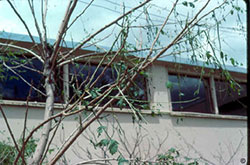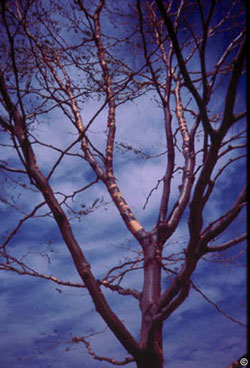2014
Hail Damage

Hail can be devastating for a Colorado garden. Damage can range from a few bruised leaves to a total wipeout of all foliage. However, plants want to grow, so with time and some extra care, lots of them will recover.
Flowering annuals with no remaining foliage probably won’t recover after a hailstorm. Petunias usually survive if there is at least some foliage still on the plant. Clean the plants of ruined foliage and apply a light application of fertilizer to help them recover.
Early vegetable root crops with no remaining foliage will not recover. They need the green leafy foliage to produce energy for the roots to grow. Leafy vegetable crops may recover; replant if you see no signs of new growth after a week or so.

For perennials with foliage intact but stripped, remove flower stalks and cut them back leaving as many intact leaves as possible. Lightly cultivate the soil, and apply a light dressing of low-nitrogen fertilizer.
If there is hail late in the season, root crops may be mature enough to survive and be harvested. Remove damaged parts of leafy crops. Replace plants lost to hail with fall cold crops like cabbage or broccoli.
Inspect woody plants for bark wounds and exposed live tissue. If severe wounds exist, you may want to treat the plant with a fungicide to help prevent canker diseases. If wounds are less severe, allow natural callusing to occur.
For more information, see the following Colorado State University Extension fact sheet(s).



